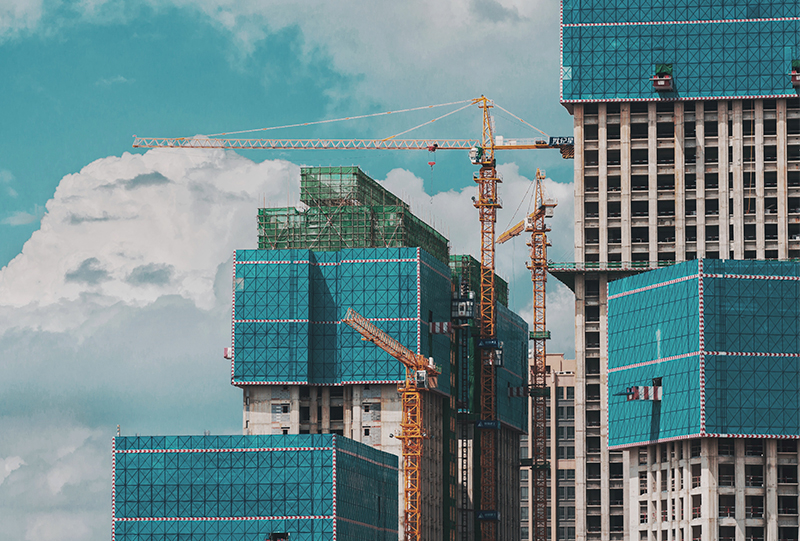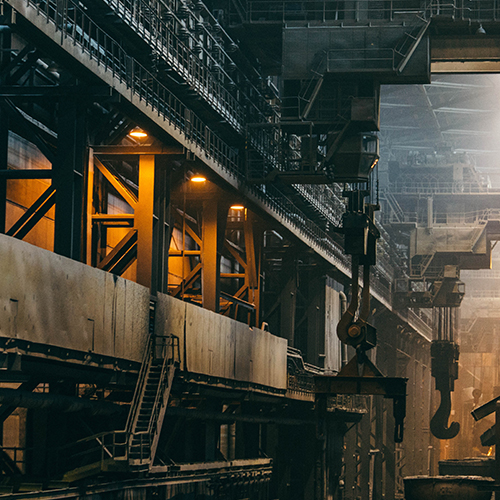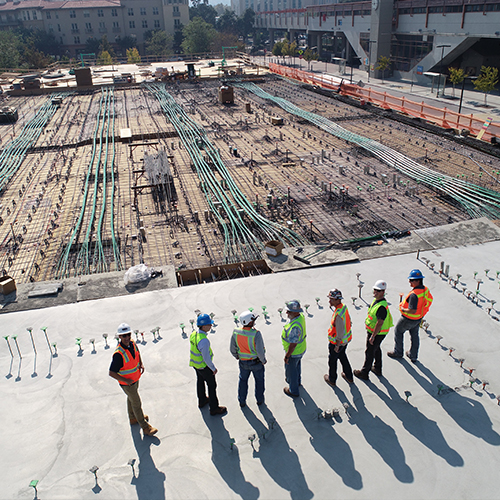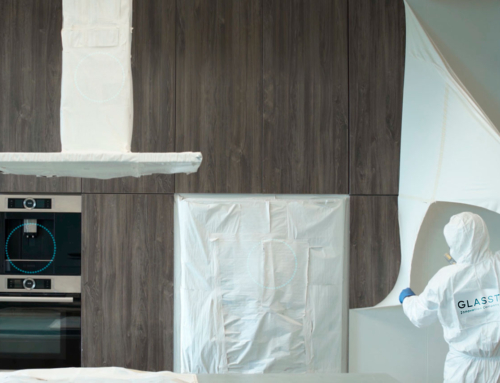Finding a new way to conduct processes, optimize time and save on raw materials, with the least possible impact on the environment, is what technological innovation is all about, and it goes hand in hand with the 4.0 revolution we are experiencing.
In this new post-pandemic normality, when we talk about technological innovation you probably think of advances in connectivity, but technology encompasses more than just telecommunications.
This time we want to talk about those innovations in a sector as traditional as the construction industry and its sustainable solutions.
The 4.0 revolution and its influence of technological innovation
Have you taken a look at history lately? Go back years, decades and centuries, you’ll notice how crucial the influence of technological innovation has been in the different industrial revolutions. We’re going to help you think back¹:
● First industrial revolution (between 1760 and 1830): there was a shift from manual to mechanized production.
● Second industrial revolution (around 1850): mankind learned the benefits of electricity and enabled mass manufacturing.
● Third industrial revolution (mid-20th century): the advent of electronics, information technology and telecommunications.
We are in the midst of the fourth industrial revolution, also known as revolution 4.0. In this phase, technological innovation and the means of production are linked to generate smart factories.
3 characteristics the fourth industrial revolution:
● Speed: current advances are unprecedented in history.
● Scope: its innovations enable highly-customized flexible efficient manufacturing.
● Impact: it influences almost all systems and industries in the vast majority of countries in the world.
Terms such as internet, digitalization, artificial intelligence, big data, internet of things (IoT), and cloud services, among others, are associated with this revolution. Surely you are familiar with all of them and they are part of your daily life, right?
How does this revolution affect the construction sector?
This is one of the sectors that most activates economy and its current technological transition is focused on 2 specific aspects: automation and the incorporation of emerging technologies².
To translate the above, in terms of strategies and specific actions, we would say that the 4.0 construction revolution is evidenced as follows:
● Implementing robotic equipment, which will reduce accident rates and improve construction productivity.
● Accessing relevant information in real time, for decision making to plan, design and execute a project.
● Using block chain technology to enable the creation of new business models based on the value of things and construction 4.0.
● Incorporation of 3D construction material printers, to facilitate project customizing, manufacturing and productivity.
The boost that the construction industry gives a country’s economy is indisputable. Of course, digitalization can be faster, more efficient, and issuing sustainability techniques should be a priority.
Construction 4.0, in the fourth industrial revolution, is a process that is marking an acceleration which is so powerful that even with stumbles and delays, it continues moving forward.
Sustainability, a topic to be talked about in Industry 4.0
How is this radical change taking place in the way companies and the environment relate to each other, particularly in the construction industry, where 85% of the materials that will be used by 2050 have not yet been invented. “It is necessary to make the necessary changes, even in the business model, to develop products and services with less impact on the environment,” as our CEO, Juan Camilo Botero, believes.
If we take into account that this industry is responsible for 23% of single-use plastic consumption³, the construction sector must focus its technological innovation on the creation of biodegradable products.
A mix of technological innovation and sustainability
At Glasst, we are not only working on the basis of the 4.0 revolution, we are already considering the fifth. To do so, it is necessary to mix technological innovation, engineering and development, all without losing sight of sustainability.
We want to leave our mark, but in a way that we will be proud to remember, protecting people and the planet. How is this possible? By researching and developing new materials for a sustainable future.
In Glasst Innovation, we have created products that have generated great changes in the sector. We are pioneers in the removable architectural paint market; that is, a paint that can be removed as if it were a sticker or sticker, without damaging walls.
A look at the construction sector
The driving power of the construction sector in Colombia is more than evident. This is a guild that generates direct and indirect jobs, reactivates other sectors and subsectors of the economy, contributes to the reduction of the housing deficit, among other benefits.
Despite the recent pandemic and public order problems, the sector’s figures continue to be positive. In the remainder of 2021, it is projected to exceed 200,000 housing units marketed, and this only promotes the development of new projects
Opportunities in the construction industry
In about 30 years, perhaps less, houses, apartment complexes, road infrastructure and other projects will be built completely different from the way we know them today.
Some of these projections are technological innovations in materials and processes:
● BIM methodology: decreasing lead times, shortening budgets and providing a more sustainable approach to constructions⁴.
● Energy efficiency: development of waterproof materials with sustainable features, such as thermo-reflective insulation.
● Customized prefabrication and zero waste: 3D material-printing is a sign of this.
This mix of technologies has changed the world. It is a transformation that will just have to wait for the next one. The fifth revolution, the ultimate merger of humans and machines is already underway, just like this endless technological innovation, for or against humanity. It’s up to us.






